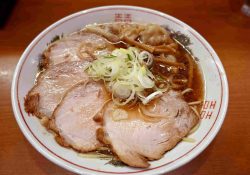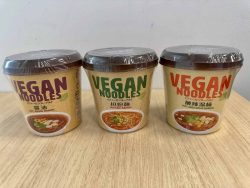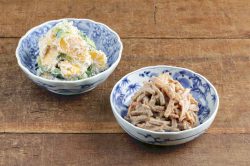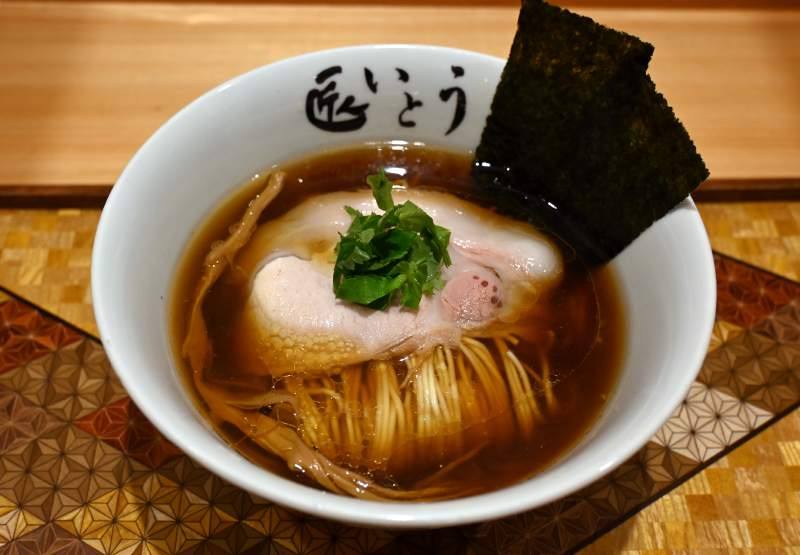
Shoyu ramen (¥1,350)
14:45 JST, November 18, 2022
Shojin Ito, a ramen shop that opened last summer in Tsujido in Kanagawa Prefecture’s Shonan area, is attracting attention for its unique line of health-focused ramen. Using carefully selected ingredients from all over Japan, mainly organic, the shop aims to create nutritious, healthy ramen that no one needs to feel guilty about eating. In Japan, people tend to say, “Don’t drink the ramen broth, it’ll make you fat,” but the owner, who boasts a unique background, has been working diligently each day to change such perceptions.
The shop is located in a residential area about a three-minute walk east from the south exit of JR Tsujido Station. The calm exterior blends in with the surroundings, but you can tell that the place is a ramen shop by the small noren curtain over the door. Inside, a total of 10 seats are placed at spacious intervals along counters on either side, and Hakone-marquetry coasters and chopstick rests lie neatly in their places. There is also a private room in the back for those with small children.
-
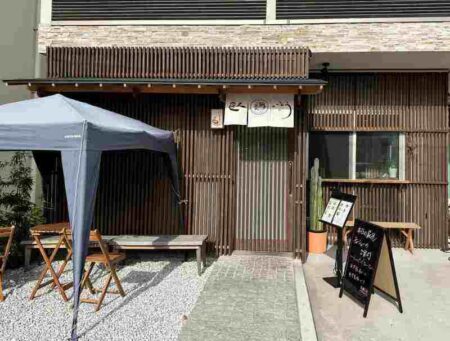
The exterior of the shop
-

The south exit of JR Tsujido Station. The shop is located straight ahead on this street.
-
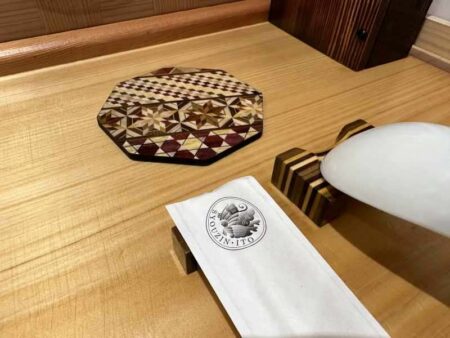
Hakone-marquetry coasters and other items are used at the shop.
The owner, Masaru Ito, who greeted me in his white cook’s uniform, explained, “It is difficult to use all organic ingredients, but I try my best to make my additive-free, MSG-free ramen extremely organic.”
I took a close look at the ticket machine at the entrance. From the top the options read “shoyu” (soy sauce), “original shoyu,” “shio” (salt), and “tsukemen” (dipping noodles), each with variations such as ajitama (half-boiled egg) and won ton toppings. I purchased the topmost one, “shoyu ramen” (¥1,350). A stiff price for ramen, but the reason for this became clear later when I heard Ito’s explanation.
-
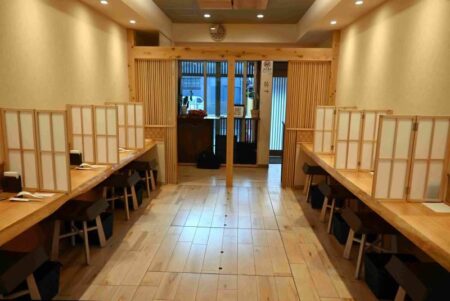
The shop interior, which features warm wood accents
-

A private room for customers with small children
-
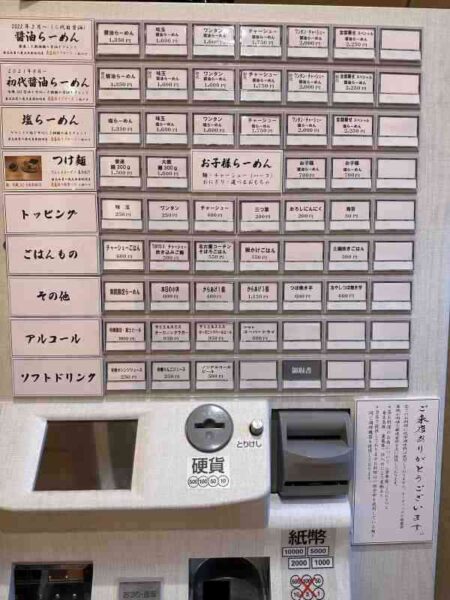
A ticket machine at the shop entrance. Children’s ramen is also available for ¥700.
The ramen was ready shortly. Simple and beautiful, that was my first impression when I saw it on the counter. The broth’s sheen convinced me it would be delicious. Taking a sip, the rich, mellow and elegant aroma of soy sauce melded with the chicken-based flavor. It soaked right into my body. According to Ito, a pork bone broth made from Kagoshima Kurobuta pork genkotsu (pig knee joints) is also used to add a bit of flavor. However, there is no smell of pork at all. Furthermore, “the sweetness of the meat alone is not enough,” he says, so he adds a kaeshi sauce prepared from scallops, dried fish, Rausu kombu (kelp), and other shellfish. The soy sauce is a blend of several different types of kiage soy sauce, and is made to be somewhat refined and on the milder side. The menu’s “original shoyu,” meanwhile, has been served since the shop’s opening and uses a blend of eight different types of soy sauce, which strongly accentuates the soy sauce flavor.
A description of the shop’s ingredients on the counter lists a variety of carefully selected items. Just for the chicken used for the soup, it lists Nagoya Cochin, the local Fujisawa Shamo, Okayama Sansui Jidori and Akita Hinai Jidori. The soup may be complex in its makeup, but the flavors are harmonious and simply delicious. It is more than just “drinkable”; I found myself draining the bowl without hardly thinking about it, as if the soup were dashi broth.
-
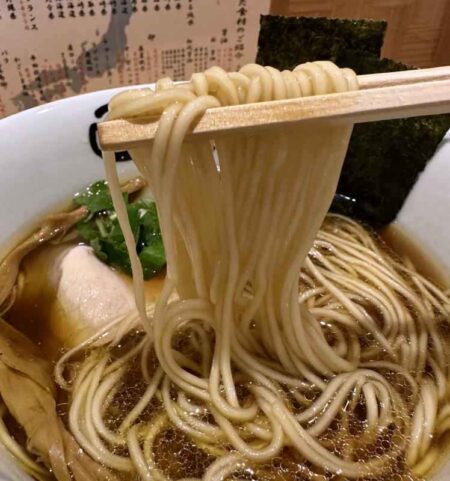
The homemade, medium-thin noodles used go well with the soup.
-
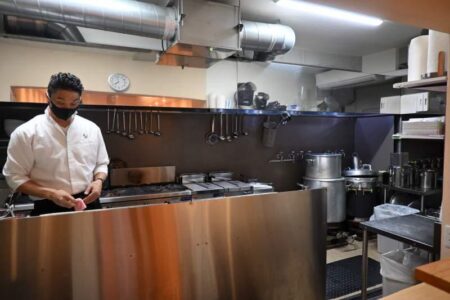
Ito, dressed in a cook’s uniform, begins making ramen.
-
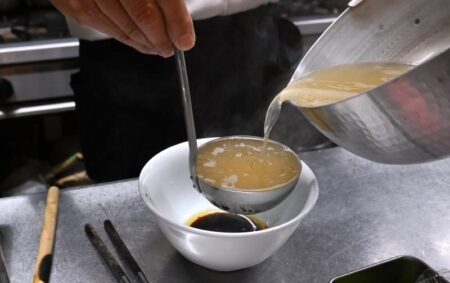
Filling a bowl with soup
-

Gently draining the boiled noodles
-
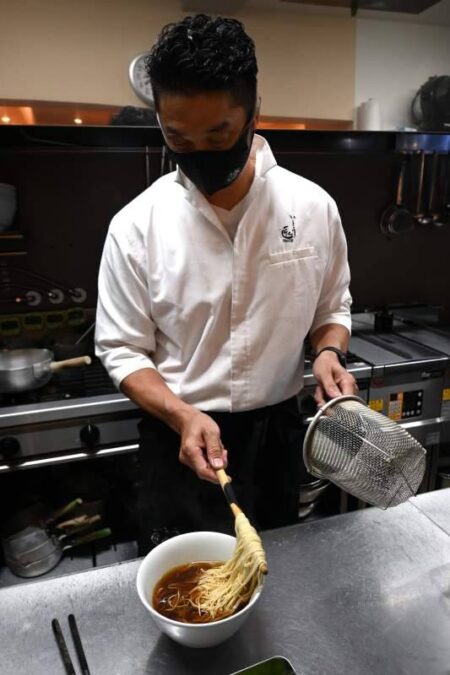
Shaping the noodles in a bowl
The shop’s homemade noodles are made daily by a noodle-making machine, and they rest overnight before being served. Only first-grade flour produced from Hokkaido wheat is used, allowing you to enjoy the scent of the wheat. The medium-thin noodles used for the shoyu ramen bring up just the right amount of soup, and give the dish a fine balance. The thickness of the noodles varies depending on the type of ramen, and the amount of water in the noodles is adjusted daily according to the day’s temperature and humidity.
The shop’s homemade chashu pork also shows considerable dedication. All the ramen noodles are served with a rib chashu made from Kago pork, which is known as “the rarest black pork of all” and is produced in Makurazaki, Kagoshima Prefecture. Ramen chashu usually comes from belly or shoulder pork, and it is rare to find such chashu made of rib pork, which is popular for tonkatsu. Pork rib meat has the fat around the meat, rather than as marbling within the meat. “The Kago pork ribs are really delicious, and you can taste the fat around the meat as well,” says Ito. If you order extra chashu pork as a topping, you can try a different kind. The chashu toppings include the hard-to-find Tokyo X-brand shoulder, Amami Island pork belly and Hirata Farm’s Kinka pork. What’s on offer will depend on what’s in stock for the day. The ramen is also topped with menma (pickled bamboo shoots), nori (seaweed) and mitsuba leaves.
-
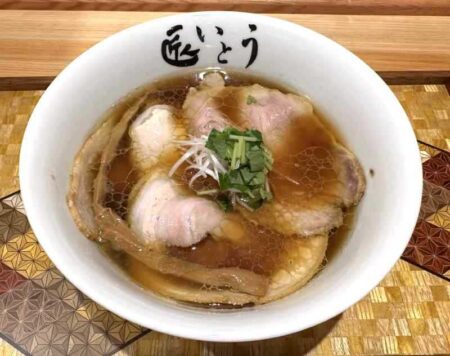
Chashu shoyu ramen (¥1,750)
-
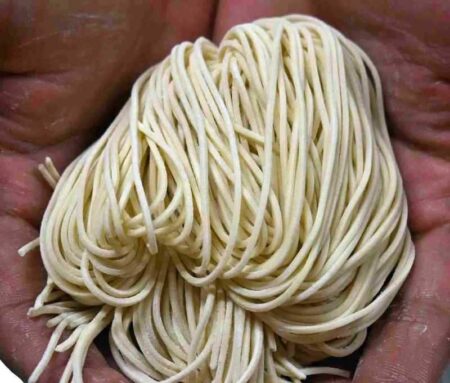
Homemade noodles made with Hokkaido wheat
-
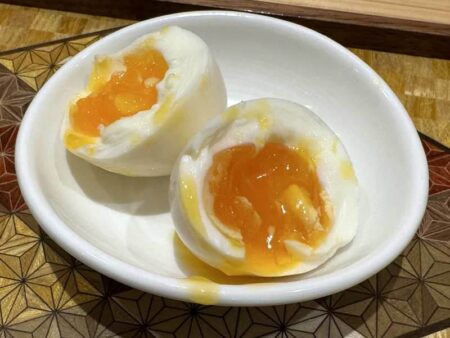
The shop’s organic half-boiled eggs (¥250) are moist and delicious.
-
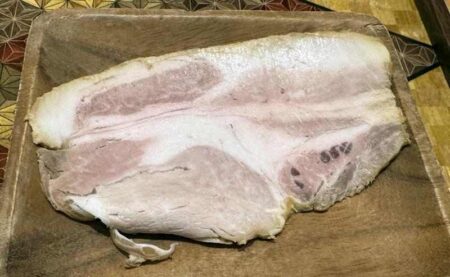
Tokyo X topping chashu (¥400)
-
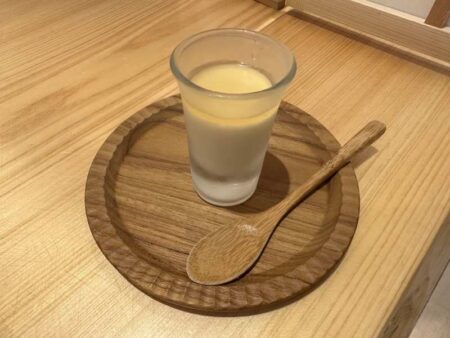
A post-meal Chinese-style almond jelly
Ito served me a homemade Chinese-style almond jelly, a dessert that comes with every order of ramen. It was very soft and smooth, with just the right amount of sweetness to hug my mouth. It was a very satisfying post-meal experience.
The meal’s delicate, healthy ramen was one that Ito, a tall man with a sturdy physique, created with great care.
Seeking the best ingredients
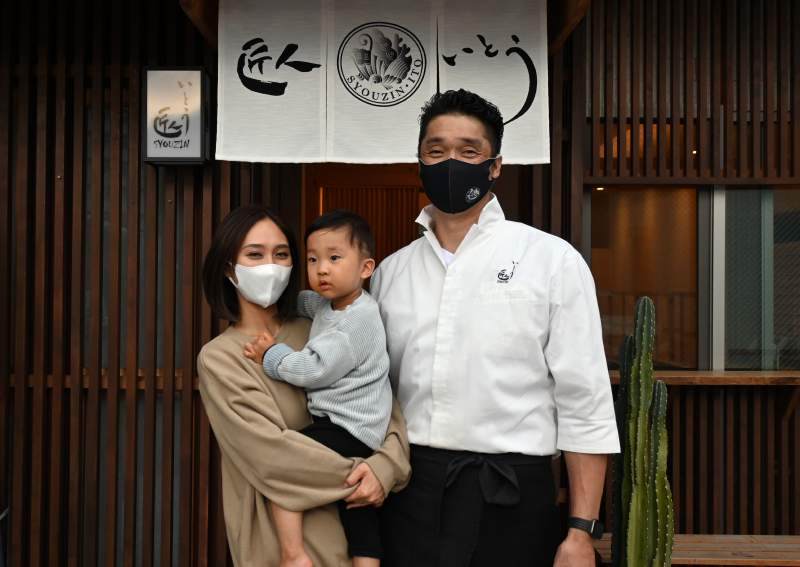
I interviewed Ito and his wife Erika, who was holding their two-year-old son, at their office near the shop. Erika’s title on her business card reads “okami” (proprietress).
How did their particular ramen come about? Erika responded, saying, “I believe that food education is very important, and I was very particular about seasonings and ingredients at home for about 10 years before we started the ramen shop. This is reflected in our ramen shop now.” It was a physical breakdown by Ito that led them to start the shop. “I also broke down around the same time, and a few years later my eldest daughter was born, and I began to put my family’s health first,” Erika says.
Ito has been running a construction and real estate company for decades. He has passed the management of that business on to the next generation and opened the ramen shop with his wife last August. “I have always been interested in the food and beverage business, and at first I was just thinking, ‘I’m going to take it easy and open a ramen shop,’” he recalled. However, such lighthearted feelings were soon swept away. He started with no knowledge or experience with ramen. The more he worked at it, the more he got hooked, and for a year and a half, he continued his “research” of making ramen through trial and error and giving it a taste test. “Once he decides to do something like this, he is the type of person who will go to any length,” Erika said as she smiled at Ito.
-
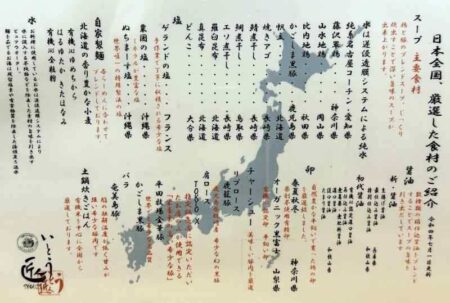
Information about the shop’s carefully selected ingredients
-
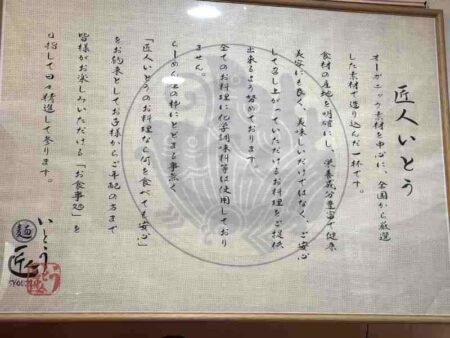
The owner’s philosophy behind his ramen
Ito traveled to Makurazaki, Kagoshima Prefecture, to learn how to make a delicious bonito flake soup stock, and contacted the local agricultural cooperative to get recommendations for good Kurobuta pork. He even went to Mongolia in search of rock salt. “I was able to make chicken soup that was delicious even when drunk on its own,” he said. But the flavor was too weak to be used in ramen. “Then came my research on how to make good use of pork bones and seafood,” says Ito. His seafood-based kaeshi sauce took a long time to prototype because he stuck to the cold-water method for making broth, which takes a night to extract the flavor from the ingredients. This was how he selected foodstuffs from all over Japan and seasonings such as sake and mirin that would bring out the best of the ingredients. Using good organic and additive-free products made it hard for him to make compromises on even the smallest items, and the costs piled up.
“There seems to be a ¥1,000 price wall in the ramen industry, and I surprised everyone when my ramen price exceeded that level from the first,” Ito recalled. However, in order to be able to confidently offer delicious ramen that can be eaten with peace of mind, Ito believes that he had no choice. “This is my work of art.”
Expanding to Indonesia
-
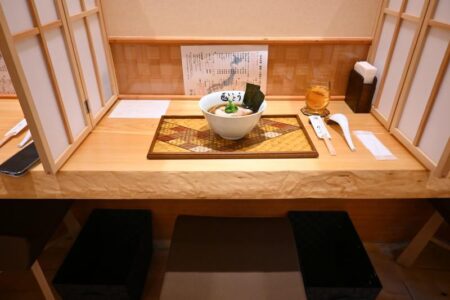
Ramen that has been brought to a counter seat
-
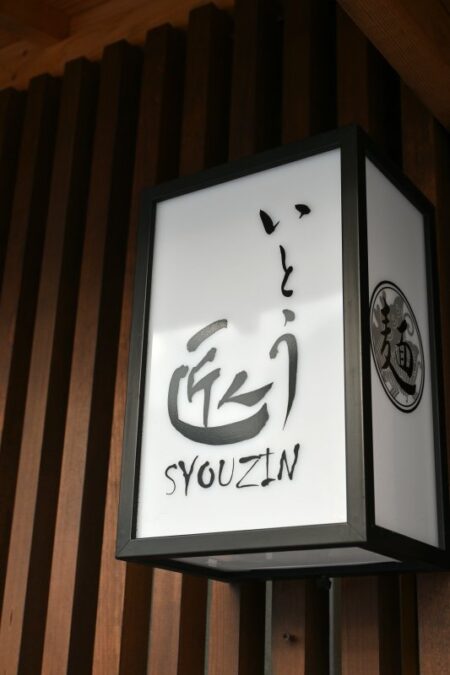
Lights at the shop entrance
In the near future, Ito hopes to expand his ramen shop to Jakarta, Indonesia. An Indonesian man who was once accepted as a technical intern at his construction and real estate company recently returned to Japan and will soon begin his ramen training in earnest at the shop. Ito is preparing to open a ramen shop where this Indonesian man will serve as manager upon his return to his home country. If the opportunity arises, Ito would like to expand his health-conscious ramen shop to other Asian countries, including Mongolia.
-
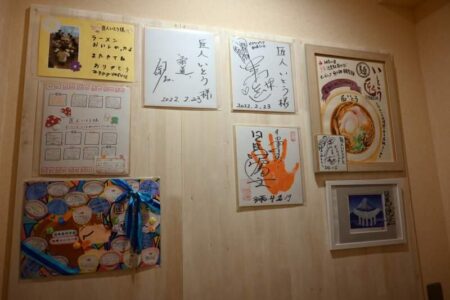
Autographs of famous people and messages of appreciation from children who were invited to the shop are displayed on the wall.
-
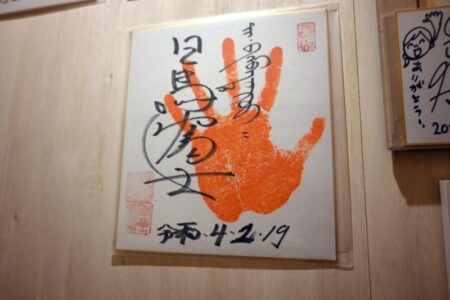
Former sumo wrestler Harumafuji, who hails from Mongolia, also visited the shop.
Children from two children’s homes were invited to eat ramen this year, and the ramen was very well received. “We use good ingredients with high in nutrients, so watching them I thought, ‘soak it all up,’” said Erika. For her part, she plans to expand her nutrition education activities.

Shojin Ito
1-1-31-5 Tsujido-Motomachi, Fujisawa City, Kanagawa Prefecture. Weekdays: 10:30 a.m. to 2:30 p.m. Open only for lunch. Weekends: 10:30 a.m. to 7:00 p.m. Closed on Mondays.
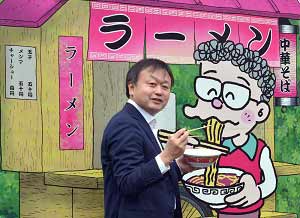
Futoshi Mori, Japan News Senior Writer
Food is a passion. It’s a serious battle for both the cook and the diner. There are many ramen restaurants in Japan that have a tremendous passion for ramen and I’d like to introduce to you some of these passionate establishments, making the best of my experience of enjoying cuisine from both Japan and around the world.
Japanese version
【ラーメンは芸術だ!】罪悪感のないラーメン目指す湘南の「匠人」、こだわりの食材が生み出すハーモニー

"JN Specialities" POPULAR ARTICLE
-

The Japan News / Weekly Edition (12/12-12/18)
-

English-language Kabuki, Kyogen Entertain Audiences in Tokyo; Portland State University Professor Emeritus, Graduates Perform
-
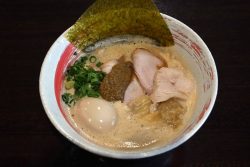
Noodle Dining Shunsai / Rich Oyster Ramen to Savor at Odasaga; Experienced 68-year-old Owner Creates Numerous Ramen Varieties
-

The Japan News / Weekly Edition (12/5-12/11)
-

People Keep Loved Ones’ Ashes Close in Special Jewelry, Small Urns as Unique Way to Memorialize Them
JN ACCESS RANKING
-

Keidanren Chairman Yoshinobu Tsutsui Visits Kashiwazaki-Kariwa Nuclear Power Plant; Inspects New Emergency Safety System
-

Imports of Rare Earths from China Facing Delays, May Be Caused by Deterioration of Japan-China Relations
-

University of Tokyo Professor Discusses Japanese Economic Security in Interview Ahead of Forum
-

Japan Pulls out of Vietnam Nuclear Project, Complicating Hanoi’s Power Plans
-

Govt Aims to Expand NISA Program Lineup, Abolish Age Restriction



